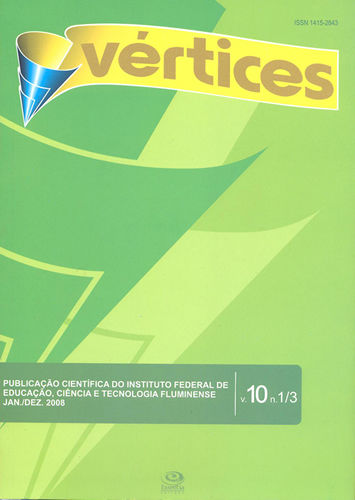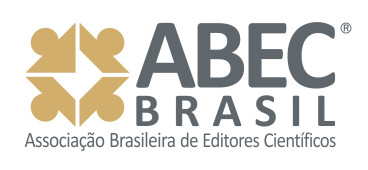Ganhos de força muscular por adaptação neural em idosas
DOI:
https://doi.org/10.5935/1809-2667.20080004Palavras-chave:
Idoso, Adaptação neural, Força muscularResumo
Definir as proporcionalidades da perda de força muscular é um fator relevante para a construção de programas de recomposição. O objetivo deste estudo foi verificar os ganhos de força muscular pelo teste de 1 RM, nos diversos segmentos musculares, num grupo de 30 idosas. Os resultados foram significativos (p<0,05); entretanto, os membros inferiores obtiveram maiores escores, 43,50% no Leg press contra 14% no supino, concluindo-se que em grupamentos musculares maiores os ganhos são mais expressivos.Downloads
Referências
ACSM. Teste de Esforço e Prescrição de Exercício. 5. ed. Rio de Janeiro: Revinter, 2000.
BALES, Connie; RITCHIE, Christine. Sarcopenia, weight loss, and nutritional frailty in the elderly. Annual Review of Nutrition, v. 22, p. 309-324, Palo Alto, 2002.
BAUMGARTINER; KOEHLER, K.; GALLAGHER, D. Epidemiology of sarcopenia among the elderly in new mexico. Am J Epidemiol, v. 147, p. 755-763, 1998.
CRAIG, B. W. Resistance Training and Bone Growth in the Elderly. National Strength and Conditioning Association, v. 24, n. 3, p. 63-64, jun. 2002.
ENOKA, Roger M. Bases Neuromecânicas da Cinesiologia. 2. ed. São Paulo: Manole, 2000.
EVANS, W. J. Exercise training guidelines for the elderly. Medicine and Science in Sports and Exercise, v. 31, n. 1, p. 12-17, 1999.
FIATARONE, M. A. et al. Higth-intensity strength training in nonagenarians. JAMA, v. 263, n. 22, p. 3029-3034, 1990.
FIATARONE, Maria Antionette. Exercise comes of age: Rationale and recommendations for a geriatric exercise prescription. The Journals of Gerontology. Series A: Biological sciences and medical science, v. 57 A, n. 5, p. 262-283, Washington, 2002.
FLECK, Steven J.; KRAEMER, William J. Fundamentos do Treinamento de Força Muscular. 2. ed. Porto Alegre: Artmed, 1999.
FRONTERA, W. R. et al. Aging of skeletal muscle: a 12-yr longitudinal study. Journal of Applied Physiology, v. 88, Issue 4, 1321-1326, apr. 2000.
FRONTERA, W. R. et al. Skeletal muscle fiber quality in older men and women. Journal of Applied Physiology, v. 279, n. 3, p. C611-C618, sep. 2000.
GERALDES, A. A. R. Efeitos do treinamento contra resistência sobre a força muscular e o desempenho de habilidades funcionais selecionadas em mulheres. Rio de Janeiro, 2000. Dissertação de Mestrado. Universidade Castelo Branco, 214 p.
HÄKKINEN, K. et al. Selective muscle hypertrophy, changes in EMG and force, and serum hormones during strength training in older women. Journal of Applied Physiology, v. 91, Issue 2, 569-580, aug. 2001.
HÄKKINEN, Keijo et al. Bilateral and unilateral neuromuscular function and muscle cross-sectional area in middle-aged and elderly men and women. The Journal of Gerontology: Series A: Biological science and medical science, v. 51, p. B21-30, Washington, Jan. 1996.
HEATH, John M.; STUART, Marian R. Prescribing Exercise for Frail Elders. American Board of Family Practice, v. 15, n. 3, p. 218-228, 2002.
KRAEMER, J. B. et al. Effects of single vs. multiple sets of weight training: impact of volume, intensity, and variation. Journal strength and conditioning research, v. 11, n. 3, p. 143-147, 1997.
LANDERS, L. A. et al. The interrelationship among muscle mass, strength, and the ability to perform physical tasks of daily living in younger and older women. The Journal of Gerontology. Series A: Biological science and medical science, v. 56A, n. 10, p. B443-449, Washington, 2001.
MARCELL, Taylor J. Sarcopenia: Causes, consequences, and preventions. The Journals of Gerontology, v. 58A, n. 10, p. 911, Washington, 2003.
MARTINS, Gilberto de Andrade. Estatística Geral e Aplicada. São Paulo: Atlas, 2001.
NEWTON, Robert U. et al. Mixed-methods resistance training increases power and strength of young and older men. Journal of the American College of Sports Medicine: medicine and science in sports and exercise, 2002.
PLOUTZ-SNYDER, L. L.; GIAMIS E. L. Orientation and familiarization to 1RM strength testing in old and young women. Journal of Strength and Conditioning Research, v. 15, n. 4, p. 519-523. New York, 2001.
PORTER, M. M. et. al. Effects of long-term resistance training and detraining on strength and physical activity in older women. Journal of Aging and Physical Activity, v. 10, p. 260-270, 2002.
SCHLICHT, Jeffrey; CAMAIONE, David N.; OWEN, Steven V. Effect of intense strength training on standing balance, walking speed, and sit-to-stan performance in older adults. The Journals of Gerontology, v. 56 A, p. M281-287, Washington, 2001.
SCHOT, Phillip K. et al. Leigh A. Sit-to-stand performance of older adults following strength training. Research Quarterly for Exercise and Sport, v. 74, n. 1, p. 1-8, Washington, 2003.
STADLER, L. V.; STUBBS, N. B.; VUKOVICH, M. D. A comparison of a 2-day and 3-day per week resistance training program on strength gains in older adults (Abstract). Medicine and Science in Sports and Exercise - Supplement, v. 29, n. 5, p. S254, 1996.
THOMAS, Jerry R.; NELSON, Jack K. Métodos de pesquisa em atividade física. 3. ed. Porto Alegre: Artmed, 2002.
WILLOUGHBY, Darryn S. Resistance Training in the Older Adult. ACSM – Fit Society, p. 8-9, 2003.
WILMORE, Jack H; COSTILL, David L. Fisiologia do Esporte e do Exercício. 2. ed. São Paulo: Manole, 2002.
Publicado
Edição
Seção
Licença
Copyright (c) 2023 Guilherme Gomes Côrtes, Valéria Gomes Côrtes, Érica Pereira Neto

Este trabalho está licenciado sob uma licença Creative Commons Attribution 4.0 International License.
Os autores do manuscrito submetido à revista Vértices, representados aqui pelo autor correspondente, concordam com os seguintes termos:
Os autores mantêm os direitos autorais e concedem sem ônus financeiro à revista Vértices o direito de primeira publicação.
Simultaneamente o trabalho está licenciado sob a Licença Creative Commons Atribuição 4.0 Internacional (CC BY 4.0), que permite copiar e redistribuir os trabalhos por qualquer meio ou formato, e também para, tendo como base o seu conteúdo, reutilizar, transformar ou criar, com propósitos legais, até comerciais, desde que citada a fonte.
Os autores não receberão nenhuma retribuição material pelo manuscrito e a Essentia Editora irá disponibilizá-lo on-line no modo Open Access, mediante sistema próprio ou de outros bancos de dados.
Os autores têm autorização para assumir contratos adicionais separadamente, para distribuição não exclusiva da versão do trabalho publicada na revista Vértices (ex.: publicar em repositório institucional ou como capítulo de livro), com reconhecimento de autoria e publicação inicial neste periódico.
Os autores têm permissão e são estimulados a divulgar e distribuir seu trabalho online na versão final (posprint) publicada pela revista Vértices em diferentes fontes de informação (ex.: em repositórios institucionais ou na sua página pessoal) a qualquer tempo posterior à primeira publicação do artigo.
A Essentia Editora poderá efetuar, nos originais, alterações de ordem normativa, ortográfica e gramatical, com o intuito de manter o padrão culto da língua, contando com a anuência final dos autores.
As opiniões emitidas no manuscrito são de exclusiva responsabilidade do(s) autor(es).























1.png)



